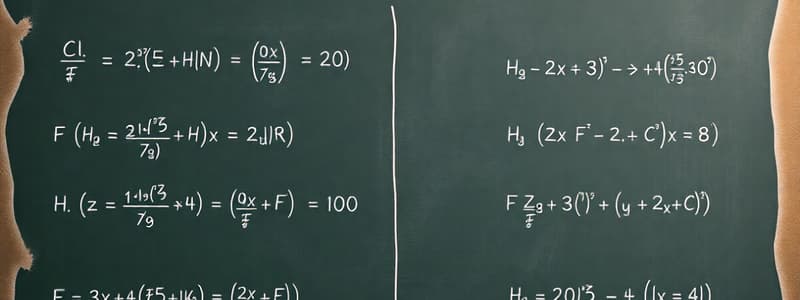Podcast
Questions and Answers
What is the basic meaning of the term 'Iso-quant'?
What is the basic meaning of the term 'Iso-quant'?
- A line that shows the relationship between different input quantities and their corresponding output values.
- A curve that represents the different combinations of two inputs that yield the same level of output. (correct)
- A point that represents the optimal combination of inputs to maximize output.
- A table that shows different production levels corresponding to varying input quantities.
Which of the following is NOT a synonym for Iso-quant?
Which of the following is NOT a synonym for Iso-quant?
- Supply curve (correct)
- Iso-product curve
- Equal product curve
- Production indifference curve
According to the given table, what is the output level when 3 units of capital and 6 units of labor are used?
According to the given table, what is the output level when 3 units of capital and 6 units of labor are used?
- 1000 units (correct)
- 500 units
- 1500 units
- 2000 units
What does the convex shape of an Iso-quant curve imply?
What does the convex shape of an Iso-quant curve imply?
What happens to the output when an Iso-quant shifts to the right?
What happens to the output when an Iso-quant shifts to the right?
Flashcards
Iso-quant
Iso-quant
A curve representing combinations of inputs that yield the same output.
Iso-product curve
Iso-product curve
Another name for iso-quants, illustrating equal product levels.
Properties of Iso-quants
Properties of Iso-quants
Features that describe the behavior of iso-quants in production.
Convex to origin
Convex to origin
Signup and view all the flashcards
Combination of inputs
Combination of inputs
Signup and view all the flashcards
Study Notes
Iso-Quants
- Iso means equal, Quant means quantity. An iso-quant represents equal quantities of output.
- Iso-quants are graphical depictions of production functions.
- An iso-quant is a curve showing input combinations producing the same output level.
- Also known as iso-product curves, equal product curves, or production indifference curves.
- The table demonstrates different input combinations (capital and labor) yielding the same output (1000 units).
- Combination A: 1 unit of capital, 15 units of labor
- Combination B: 2 units of capital, 10 units of labor
- Combination C: 3 units of capital, 6 units of labor
- Combination D: 4 units of capital, 3 units of labor
- Input changes illustrate trade-offs between inputs while maintaining output.
- Iso-quants slope downward, convex to the origin.
- The graph shows various combinations of capital and labor needed to produce 1000 units of output.
- Different combinations of capital and labor produce identical output levels.
- The graph's shape illustrates diminishing marginal rate of substitution.
Studying That Suits You
Use AI to generate personalized quizzes and flashcards to suit your learning preferences.



